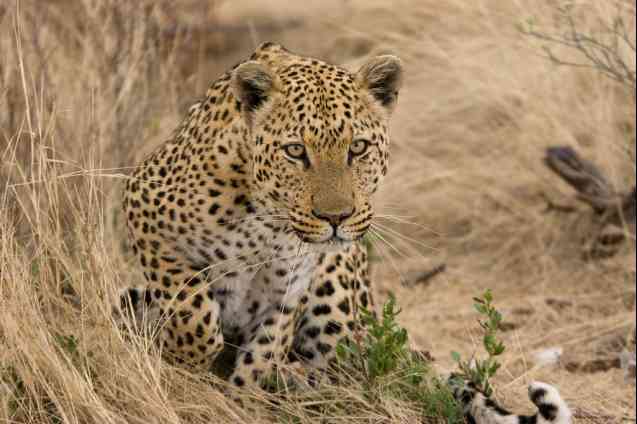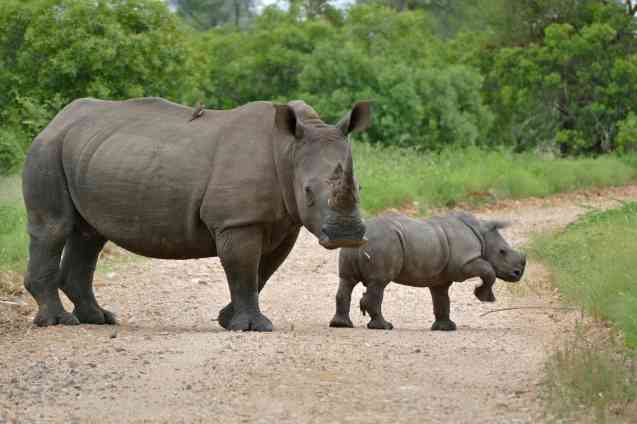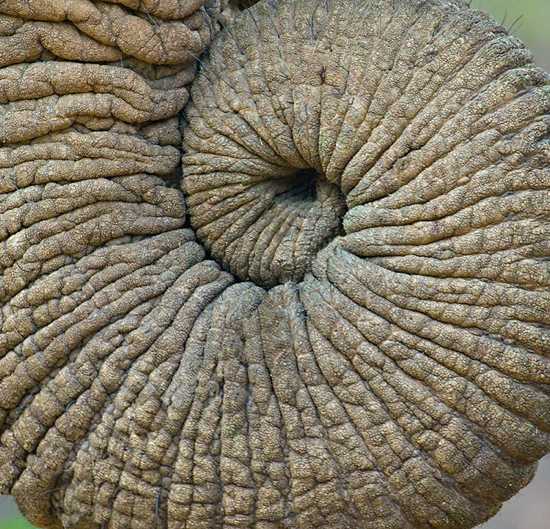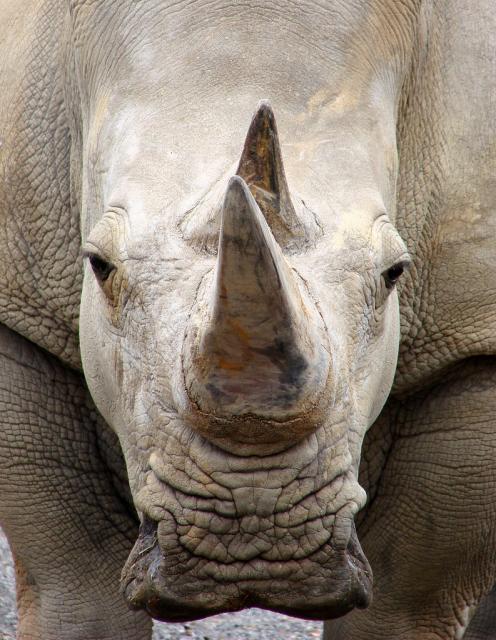The Big 5 of Africa & Where to See These Famous Big 5 Animals
The Big 5 of Africa are the most often-mentioned, relentlessly searched-for and much-loved five big African animals.
Spotting the Big 5 is a remnant of the big game hunting days of the late 18th and early 19th century. These animals were the most dangerous wild African animals to hunt on foot.
The bravado of the hunt has spread as tales that pitted man against the fiercest of beasts in a choreographed show of puffed-up masculinity.
Fortunately, many safaris today complement conservation. Africa's Big 5 animals are still hunted, but the prize is the thrill and excitement of seeing these wild animals free in their natural habitat.
What are the Big 5 Animals of Africa?
The famous Big 5 safari animals are; lion, leopard, elephant, rhino and buffalo.
To discover amazing facts about Africa's Big 5 safari stars and where to see these African animals, read on...
1. African Lions & Where to See Them on Safari in Africa
Panthera leo, The African Lion
Let's start with the most famous of the Big 5 safari animals. The lion. Africa's apex predator and the second-largest big cat in the world. Lions are not found in jungles. Instead, they can be found roaming savannahs and open plains in Africa.
 Lions in Masai Mara, Big 5 safari by Benh Lieu Song
Lions in Masai Mara, Big 5 safari by Benh Lieu Song
Big 5 Lion Facts
-
They are the most social felines on earth. Lions are the only cats that live in groups (prides) and need a lot of contact with each other. Females share strong bonds as they remain in the same pride for life. They raise their cubs together, and their young suckle from any lactating females in the pride.
-
These cats are loud: a lion’s roar can be heard up to 5 miles (8km) away, enabling them to communicate with each other over large distances. The males roar louder and more often, usually to declare territory, call stray members of the pride and ward off rivals. Females call their cubs with quiet roars and when under threat as a call for backup.
-
Lions greet each other by rubbing heads to exchange scents that convey information about their intentions, moods and recent activities. This tactile greeting also creates and strengthens the bonds between lions.
-
African lions are now only found in 8% of their historic range. Wild lions are still found in some areas of sub-Saharan Africa and parts of southern and eastern Africa. Lions once inhabited Northern Africa, Southwest Asia, Europe and India, but of these areas, they are now only found in the Gir Forest National Park in northwestern India.
-
The females do the hunting, yet the males get the first helping, even when they have cubs in the pride.
-
They can see in the dark and most of the hunting is done at night, but they are not completely nocturnal. Lions are crepuscular, which means that they are most active at twilight (just before sunrise or just after sunset). They are however opportunistic feeders that will hunt at any time.
- Lions spend most of their time sleeping - these big cats sleep up to 20 hours a day!
For more about lions, see African Lion Safari: About Lions in Africa
 Lion cubs in Masai Mara by Stuart Richards
Lion cubs in Masai Mara by Stuart Richards
Conservation Status of African Lions
- Lions have been listed as Vulnerable on the IUCN Red List of Threatened Species since 1996.
- Listed as Appendix II under CITES (2016): despite the declining population of only about 20,000 African lions left in the wild.
 Male lion - Big Five animal by Stuart Richards
Male lion - Big Five animal by Stuart Richards
Best Places to See Lions in Africa
The best places to see lions on safari in Africa include Kruger National Park and Sabi Sands in South Africa, the Northern Safari Circuit (Serengeti, Ngorongoro & Lake Manyara National Park) and Ruaha National Park in Tanzania, Masai Mara in Kenya, Okavango Delta & Savuti in Botswana, South Luangwa in Zambia and Etosha National Park in Namibia.
For more details about where to see lions in Africa see The Best Places to See Lions in Africa
2. African Leopards & Where to See These Big 5 Animals
Panthera pardus: The African Leopard
The leopard may not be the biggest, but it is the strongest climber of the African big cats. Known for their power and grace leopards are stealthy nocturnal predators with excellent night vision.
 Leopard in Namibia by Greg Willis
Leopard in Namibia by Greg Willis
Big 5 Leopard Facts
-
Unlike lions, leopards are anti-social loners. These solitary cats avoid interacting with each other beyond mating and raising young cubs.
-
The largest cat species to climb trees regularly. Leopards can drag prey weighing up to three times their own body weight up into trees over 20 feet (6 meters) tall and they can also hunt from trees. Leopards even nap in trees!
-
These adaptable felines are found in the most diverse habitats of all the big cats, inhabiting both deserts and forests. Their ability to survive across a range of habitats has enabled leopard populations to survive in far-flung parts of the world, including India, China, Central Asia and Africa.
-
Leopards don't roar, they bark and snarl. When happy they even purr.
-
The leopard preys on a wide variety of species, from insects, rodents and reptiles, to birds and mammals, including antelopes as large as elands, and even giraffes.
-
Leopards are not only comfortable in the water but are strong swimmers that sometimes eat fish and even crabs.
- A leopard's spots are called rosettes as the clusters of dark spots resemble roses. Their light coats patched with dark rosettes provide excellent camouflage for these elusive hunters, especially in the dappled shade of trees.
 Sabi Sand leopard, Big 5 animal
Sabi Sand leopard, Big 5 animal
Although similar to cheetahs, there are many differences between the African big cats. Learn how to tell them apart in Leopard vs Cheetah: what's the difference?
Conservation Status of Leopards
- Updated to Vulnerable in 2016, from Near Threatened (NT) in 2008, and Least Concern (LC) in 2002.
- Many leopard sub-populations are endangered with an overall dramatic decrease in numbers due to human activities.
 Kruger leopard - Big 5 animals by Bernard Dupont
Kruger leopard - Big 5 animals by Bernard Dupont
Best Places to see Leopards in Africa
One of the best places to see leopards in the wild is in Sabi Sands Game Reserve in Greater Kruger Park, South Africa.
Other top game parks for seeing leopards include Moremi Game Reserve in Botswana, South Luangwa in Zambia and the Serengeti Ecosystem straddling Kenya and Tanzania. For more details about how and where to see leopards in Africa see our post: How to spot a leopard on Safari in Africa.
3. African Elephants & the Best Places to See Them in Africa
Loxodonta africana: The African Elephant
The largest terrestrial animal on the planet and a vegetarian to boot, elephants are known for their intelligence.
 Kruger elephants - Big Five by Vaughan Leiberum
Kruger elephants - Big Five by Vaughan Leiberum
Big 5 African Elephant Facts:
-
Elephants can get sunburnt! They throw sand on their backs and heads to prevent sunburn and keep insects off their skin. Their skins are incredibly tough, but they can also feel a tiny insect walking on their skin!
-
They have the longest gestation period of all land mammals at 22 months giving birth to calves weighing 120kg! Elephant cows give birth standing up with members of the herd forming a protective circle around her as her calf is born.
-
Baby elephants are born almost blind and some individuals suck their trunks for comfort, similar to the way young humans suck their thumbs.
-
Elephants love to swim and can swim for long distances using their trunks as makeshift snorkels. The trunk is an adapted nose used for grabbing, bathing, smelling, and drinking and can pick up something as small as a grain of rice.
-
Elephants have very sensitive pads under their feet, making it possible for them to walk quietly despite their enormous weight. The underfoot pads act as shock absorbers.
-
The elephant's closest living relatives are the dugong and a rodent-like mammal called the hyrax (commonly known as the dassie).
-
Like humans, these social creatures respond to the death of a herd member in ritualized ways. Elephants often 'bury' the deceased and stay at the grave for a few days, even showing signs of mourning.
From the Smithsonian & Listverse
Conservation Status of Elephants in Africa
- African elephants were moved from Endangered in 1996 to Vulnerable in 2004, remaining Vulnerable to date
- Desperate efforts by many African countries at the 2016 Species Conference to move all elephants onto the CITES Appendix I (threatened by extinction) failed when a two-thirds majority vote was not reached.
- Illegal hunting and ivory trade, loss of habitat and human activity see 30,000 - 40,000 elephants slaughtered every year severely jeopardising their chances for survival into the next generation.
 Hwange elephants - Big Five by Joepyrek
Hwange elephants - Big Five by Joepyrek
Best Places to See Elephants in Africa
The best places for watching African elephants in the wild include Hwange National Park in Zimbabwe and Chobe Park in Botswana.
Get the low-down on where to see African elephants in Best Places to See Elephants in Africa.
4. African Rhinos & Where to See These Big 5 Animals
Diceros bicornis, the Black Rhino & Ceratotherium simum, the White Rhino
 White rhinos in Kruger by Bernard Dupont
White rhinos in Kruger by Bernard Dupont
Big 5 Rhino Facts
-
All rhinos have three hoofed toes per foot making them "three-toed ungulates" that are most closely related to the horse, zebra and tapir. Rhinos run on their toes and are much faster than they look.
-
Rhinos are herbivorous and nocturnal, feeding at night and resting during the day.
-
Rhino horn is made of the protein keratin and is just a compact mass of hair similar to our nails or a horse's hooves. The horn is not attached to the skull and if it breaks off it will grow back.
-
All five species of rhino are endangered with the Javan and Sumatran critically endangered. There are less than 50 Javan rhinos left in a reserve in Indonesia making it the rarest mammal on the planet. In 2014, an alarming 1,215 rhinos were killed by poachers in South Africa.
-
A group of rhinos is called a 'crash.' Their gestation period is 16 months and once the calf is born the mother rhino will nurture it for three years.
-
The Black rhino has a hooked lip designed to eat leaves and twigs off trees. Black rhinos can pick up small objects and even open gates and vehicle doors with their prehensile upper lips.
-
The white rhino has a broad flat mouth ideal for grazing. Neither the black or white rhino has front teeth, which is why they rely on their lips for eating.
 Rhino - Big Five animal by Gerry Zambonini
Rhino - Big Five animal by Gerry Zambonini
Conservation Status of African Rhinos
- Southern White Rhino - listed as Near Threatened since 1994. After a severe decline, the conservation efforts of the South African government and conservationists allowed the population to bounce back significantly.
- The Black Rhinos are listed as critically endangered with less than 5000. Listed as Appendix I under CITES
- Northern White Rhinos are extinct in the wild with the only 2 left in Kenya under 24/7 armed guard.
Best Places to See Rhinos in Africa
Top African safari countries for spotting rhinos include Namibia, Kenya, South Africa and Swaziland. More specifically three of the best places to see rhinos in the wild are Hluhluwe-Imfolozi Game Reserve in South Africa, Khama Rhino Sanctuary in Botswana, and Ol Pejeta Conservancy in Kenya.
5. African Buffalos & Where to See These Big 5 Animals
Syncerus caffer - Cape buffalo
This is the least obvious and most often forgotten member of the Big Five, a formidable-looking herbivore whose calm demeanour belies an unpredictable nature.
 African buffalo in Hluhluwe Game Reserve by Bernard Dupont
African buffalo in Hluhluwe Game Reserve by Bernard Dupont
Big 5 Buffalo Facts
-
Buffalos are said to have killed more hunters in Africa than any other animal. They still kill over 200 people every year earning them the reputation and nickname of 'Black Death' and 'Widow Maker'.
-
They are known to use attack as a method of defence and often circle back on their assailants. Buffalos have excellent memories and will ambush hunters whom they have encountered before.
-
The buffalo is the only species of wild cattle in Africa and is sometimes confused with American bison or wildebeest. Buffalos have never been domesticated due to their unpredictable and often aggressive natures.
-
To get much-needed minerals buffaloes will lick termite mounds and will also lick the mud, stuck to their coats from wallowing in mud pools, off each other to get the nutrients lacking from their diet.
-
Buffalo are not endangered with a healthy population of just under a million. They are still hunted for trophies and a hunting tourist will pay up to $ 10,000 for a buffalo.
-
Buffalos drink 40l of water a day so never wander too far away from a watering hole. Lions often lie in wait for them near the water and it will usually take several lions to bring a buffalo down.
-
Female buffalos have strong bonds and if one individual is attacked the entire herd will defend it, often killing lions and other predators in the process.
 Big 5 animals, buffalo in Ngorongoro by Megan Coughlin
Big 5 animals, buffalo in Ngorongoro by Megan Coughlin
Conservation Status of African Buffalos
- African buffalos have been listed as Least Concern (LC) since 2008 but the population is steadily decreasing due to loss of habitat and human activity.
Best Places to see Buffalos in Africa
A few of the best places to see buffalos in Africa are Kruger Park in South Africa, Hwange Park in Zimbabwe, South Luangwa and Kafue Park in Zambia.
Why are They Called the Big 5 Animals?
The Big 5 are the most dangerous large animals in Africa.
These five safari animals were originally termed 'the Big Five' by big game hunters who found them to be the most difficult and dangerous African animals to hunt on foot. These days the term 'Big Five' is frequently (if not excessively) used in the African safari industry, where wildlife sightings, encounters and photo opportunities of these heavyweights are highly sought-after.
Big 5 Safaris on a Budget
Big 5 safari parks have an edge over the game reserves missing one or more of these iconic African wildlife species because safari-goers from across the planet are eager to see the famous Big 5 of Africa (rhino, leopard, lion, buffalo and elephant) combination. We have plenty of African safaris to many of Africa's best Big Five safari destinations, so contact us if you are searching for an incredible Big Five safari experience.
Our travel experts can also tailor-make a budget Big 5 Safari just for you!
Find your Big 5 Safari in Africa
You can browse our upcoming tours by popular departure cities to find Big Five Safaris that fit into your travel plans.
- To get to Kruger and Sabi Sands see our tours departing from Johannesburg
- Upcoming Cape Town tour departures for Big Five safaris in the Western Cape
- For Chobe and Hwange view tours departing from Victoria Falls
- To get to Etosha Park browse our Windhoek tour departures
- For Masai Mara and Serengeti see our Nairobi tour departures
If you liked this post, these trips cover similar ground…
- 10 Day Tanzania & Kenya Safari to Serengeti, Masai Mara & Beyond
- 7 Day Big Cats, Etosha & Desert Namibia Safari
- 4 Day Cape Town Holiday: Big 5 Safari, Wine & Peninsula Tour
- 3 Day Greater Kruger Safari to Balule Big 5 Private Game Reserve
- 5 Day Kruger Safari to Balule Private Game Reserve
- 3 Day Cape Town Safari - Big 5 Budget Tour
- 2 Day Big 5 Cape Town Safari to Aquila Game Reserve - Budget Lodge Tour
- 5 Day Addo Park & Amakhala Big 5 Safari
- 5 Day Addo Park & Kariega Big 5 Safari
- Full Day Addo Elephant Park Big 5 Safari
- 4 Day Greater Kruger Safari to Big 5 Balule Private Game Reserve
- 2 Day Cape Town Safari - Big 5 Budget Tour
- 3 Day Big 5 Cape Town Safari to Aquila Private Game Reserve
- Big 5 Cape Town Safari to Aquila Game Reserve - Budget Day Tour





 Landia is a nature and animal lover. This South African woman avoids crowds seeking out quiet places. She has worked in the African safari industry for over 16 years!
Landia is a nature and animal lover. This South African woman avoids crowds seeking out quiet places. She has worked in the African safari industry for over 16 years!






__small.jpg)




